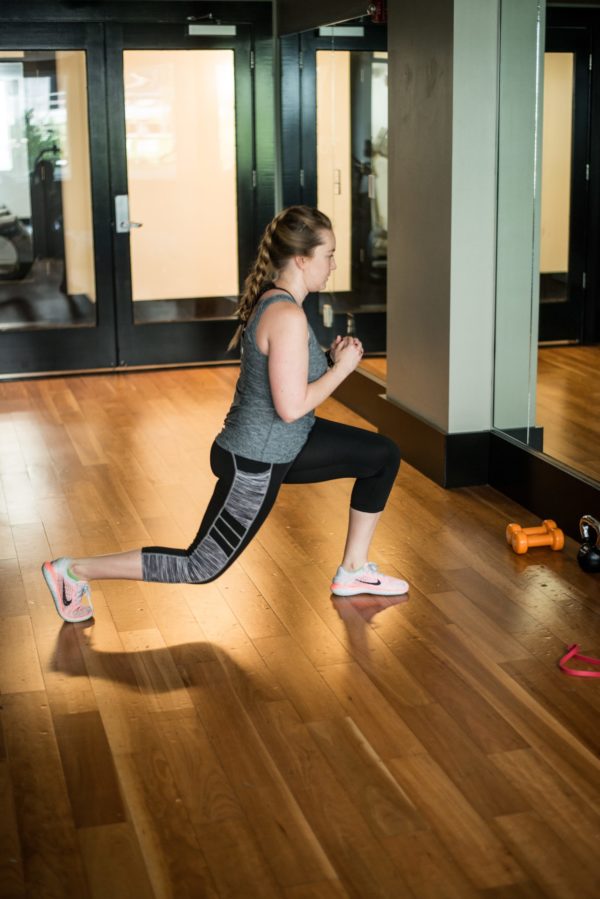This Saturday, while at my baby shower, the ladies there started talking about birth, babies, and motherhood. Then someone brought up incontinence. While they joked and asked if anyone else experienced leaking while jumping, the whole topic just made me sad. We then moved to the mom belly bulge topic. So let’s talk.

The Low Down (there)
I personally had a “mommy tummy” and was told that it’s quite normal for a woman who has had at least one kid. Then following my second pregnancy, I “filled out quickly” and was reassured by my obstetrician that it was normal. I could “have surgery to fix it.” Sadly, no one took the time to tell me that it was due to abdominal separation and that it could likely be remedied by proper exercises. No one wrote me a prescription for a pelvic floor therapy evaluation or even told me that there was such a thing. My concerns were brushed under the rug. What I have found out since then has been eye-opening.
What is Diastasis Recti (DR)?
When a woman becomes pregnant and her uterus expands with her growing baby, her abdominals naturally separate. They should close back slowly over time, following the birth of her baby. But different circumstances can cause her abdominals to stay separated. (Men and children can also get DR! It can develop from improper exercise)! The great news is that this can be worked on at ANY age.
How To Know if it’s Diastasis Recti
It’s a very straightforward exam that we can do right at home! I am not a medical professional, please be sure to see a physical therapist for the proper exam.
- Relax and lie on your back with your knees bent and feet on the floor.
- Lift your head slightly and use two fingers to gently press down on your belly button to feel for any gaps.
- Move your hand slowly above your belly button to see if the separation extends above the belly button and repeat the same steps below the belly button.
If there are any separations in which your fingers fit, this is diastasis recti. Here’s a fantastic website with more information and a video on how to perform it.
Now what should you do?
There are a few ways you can go about this. Lots of great resources can help close diastasis recti. Here are a few of my favorites:
- Tupler Technique (be ready to work those abs)
- Katy Bowman (a whole-body approach through posture correction)
- Wendy Powell (12-module Mutu System workout membership)
Wrap it up!
Another thing to consider is a two sided belly wrap. Imagine a belly wrap that does not just wrap over from one side to the other. It has to come over to both sides or wrap down the middle. My favorite two options are:
- Fit Splint Wrap (modern style wrap)
- Bengkung Belly Binding (ancient but tried and true)
Pelvic Floor Physical Therapy
I went this route because I really wanted to learn everything I could from a professional and I wanted personalized care. Pelvic floor therapy is not only recommended but required for well-woman’s care in other countries around the world. All it took was a mention to my midwife (or primary care provider or OBGYN) that I want to have a pelvic floor evaluation. They wrote a prescription and then I looked up a recommended physical therapy provider in my area who takes my insurance. My first appointment was to simply assess whether or not I had a problem that could benefit from physical therapy. Here are some reasons I moved forward with PT.
- To help avoid surgery, if possible.
- Become more educated and to avoid pelvic floor or diastasis related problems in the future.
- Teach my children that I value myself.
- Self-care! I looked at this as a form of pampering myself!
- It is no different than other forms of medicine. Exercise is medicine for the body.
Break The Silence!
I realized how prevalent this is when I began researching this topic! So why are we not being told about this? Ironic that it’s the week of International Women’s Day. We have such a long way to go!
Remember something, Ladies. COMMON does not mean NORMAL. There is a difference. We women accept way too much suffering as just a normal fact of life. We are constantly “toughing it out.” We have to be our own best health advocates, which means not ignoring when our inner voices are crying out. If we didn’t pee on accident before, then we shouldn’t accept it now. If we work out and eat healthily and still have a mom pouch, then let’s look into this. And let’s not buy into quick fixes or cosmetic devices. Always get to the root of the problem.
We also need our abs to keep our organs where they belong and to keep us feeling strong. It’s a great idea to show our kids how strong we can be and to model a positive self-image. We don’t have to sacrifice our health for the life of our baby- it’s not an either-or situation. Physicians around the world believe in a “mother-baby” concept which links the health of the mother directly to the health of the baby (if that’s not motivation enough).

















Thorough and clear. Love it! Thanks for sharing.
Comments are closed.